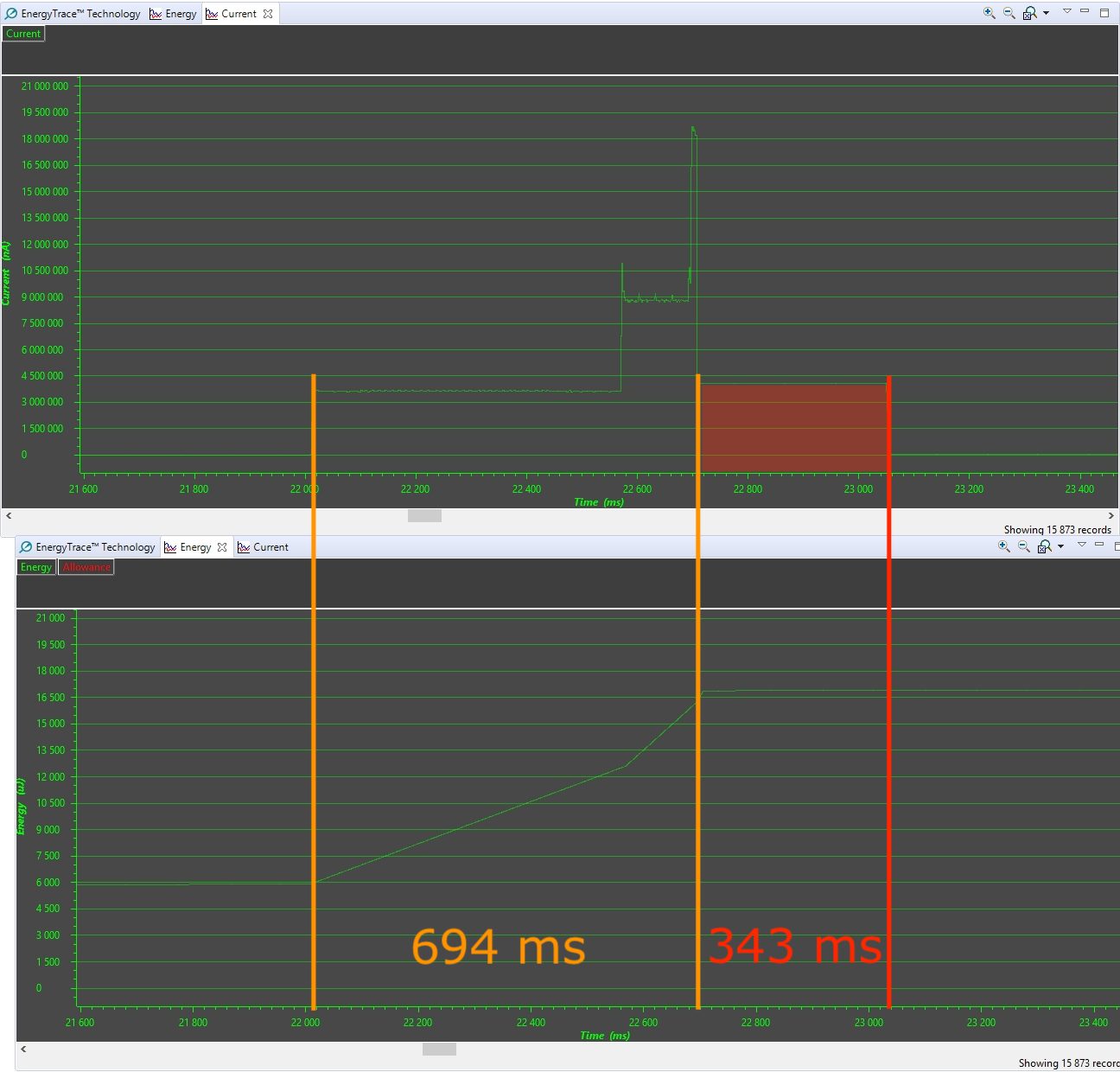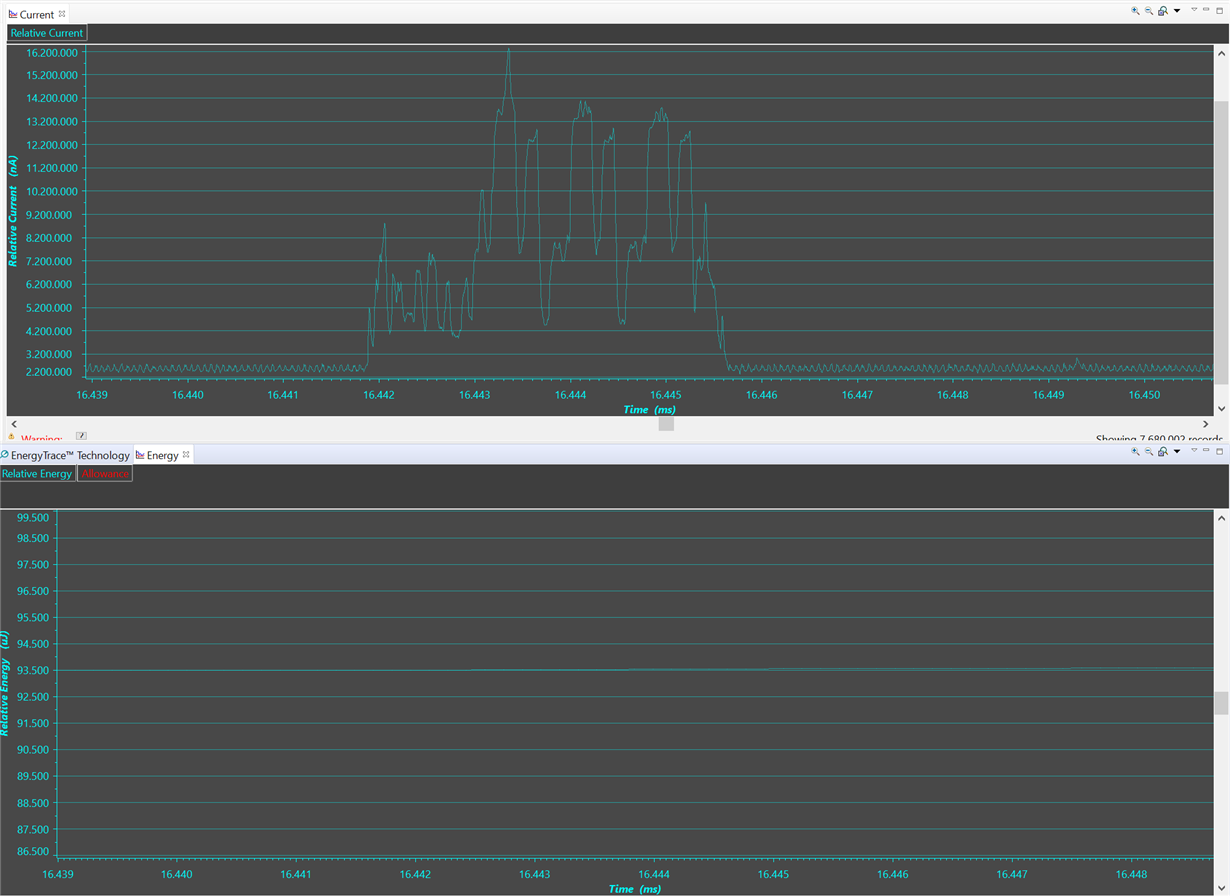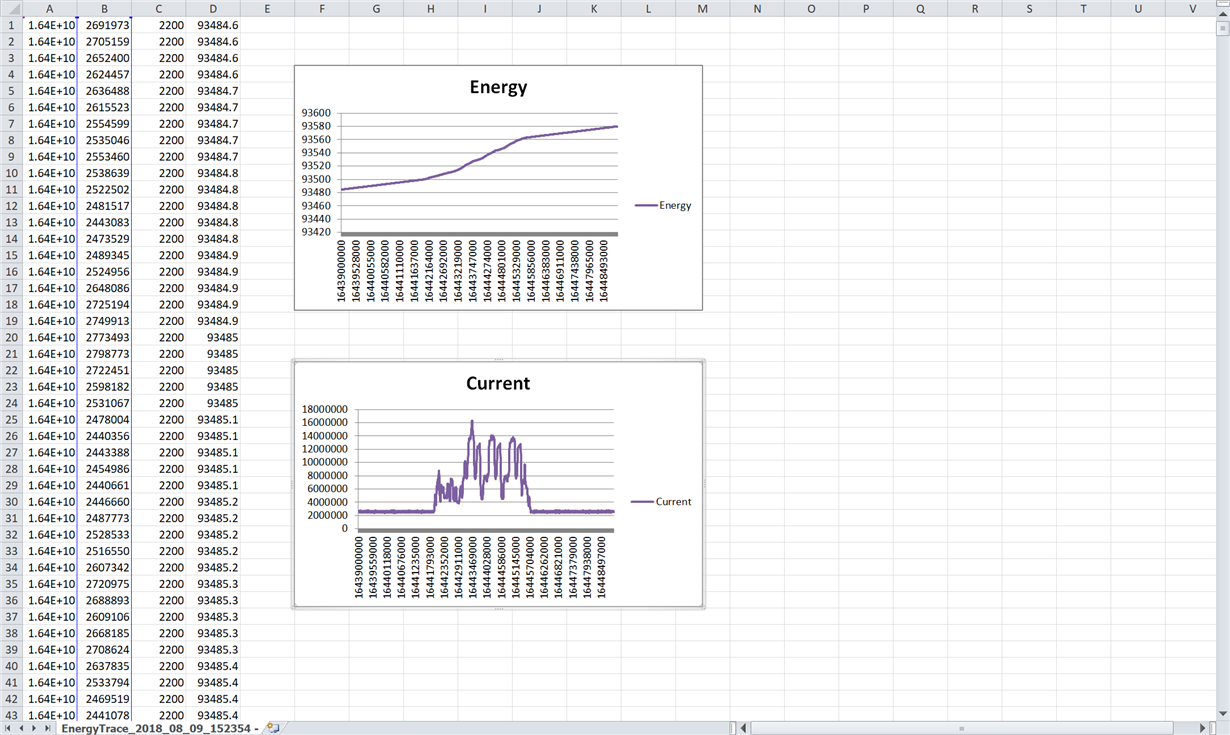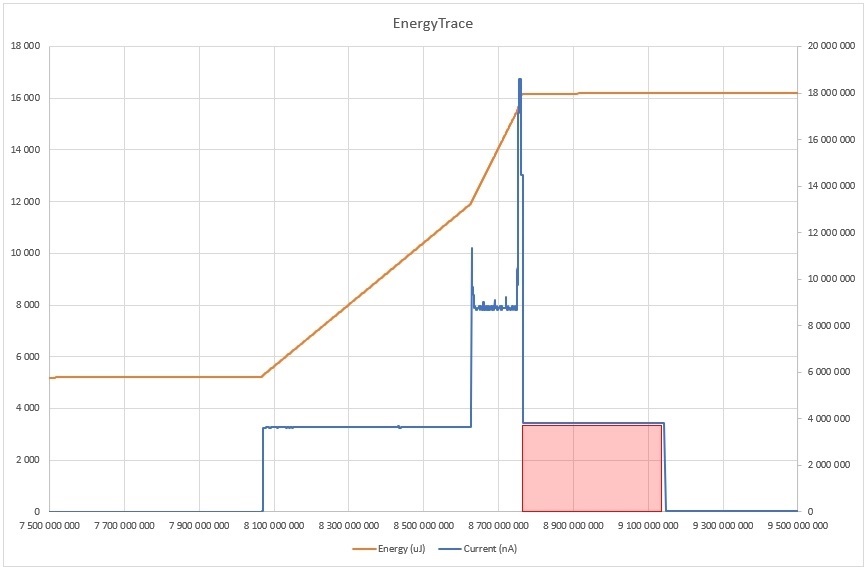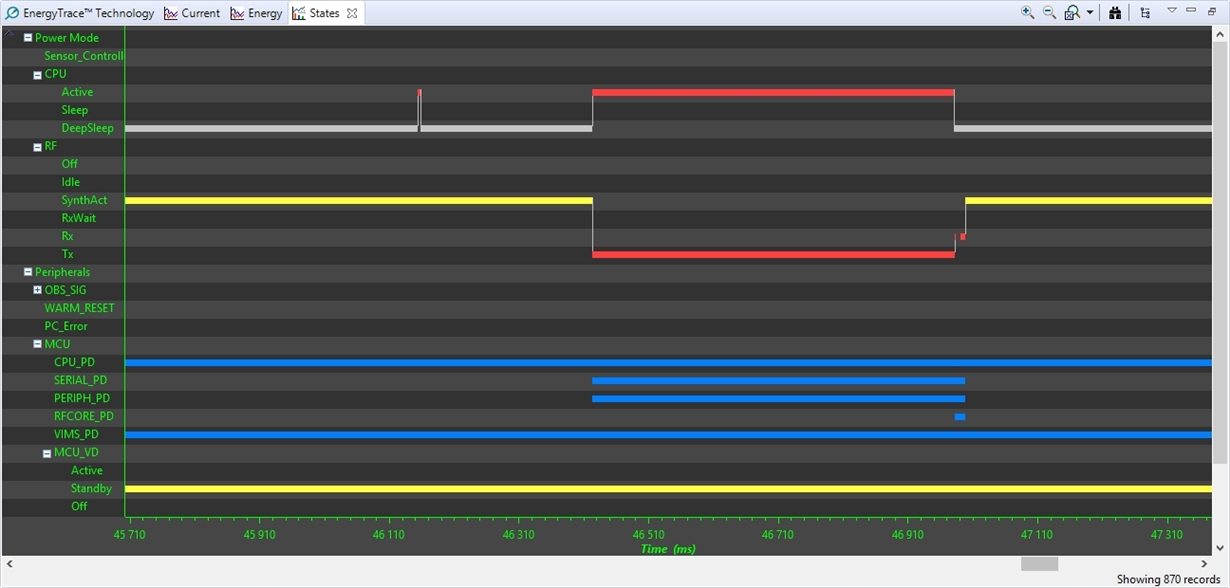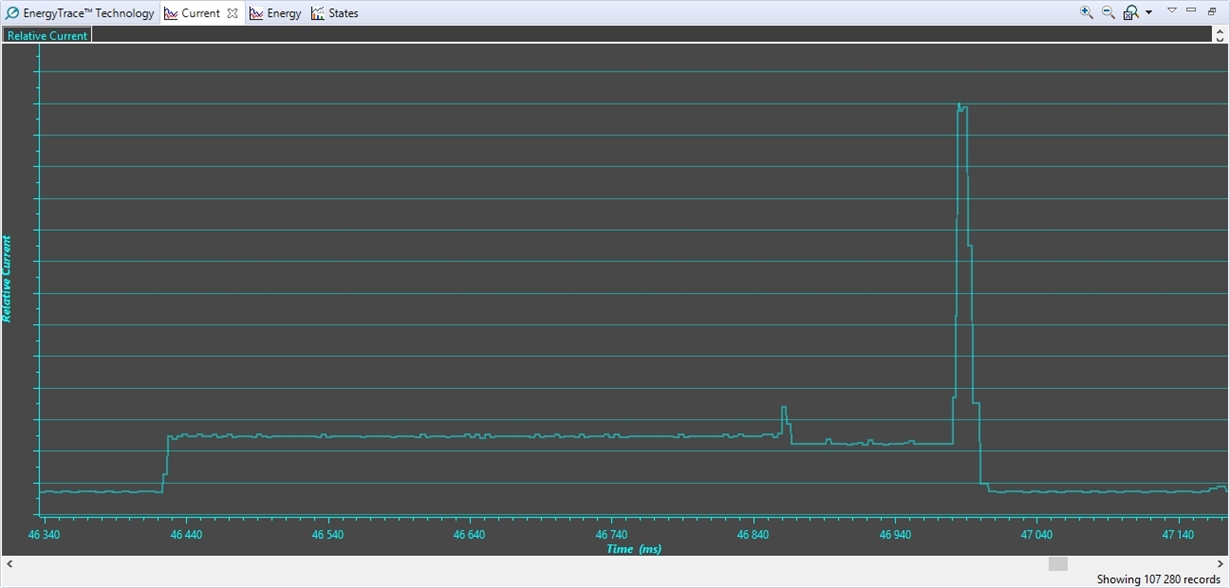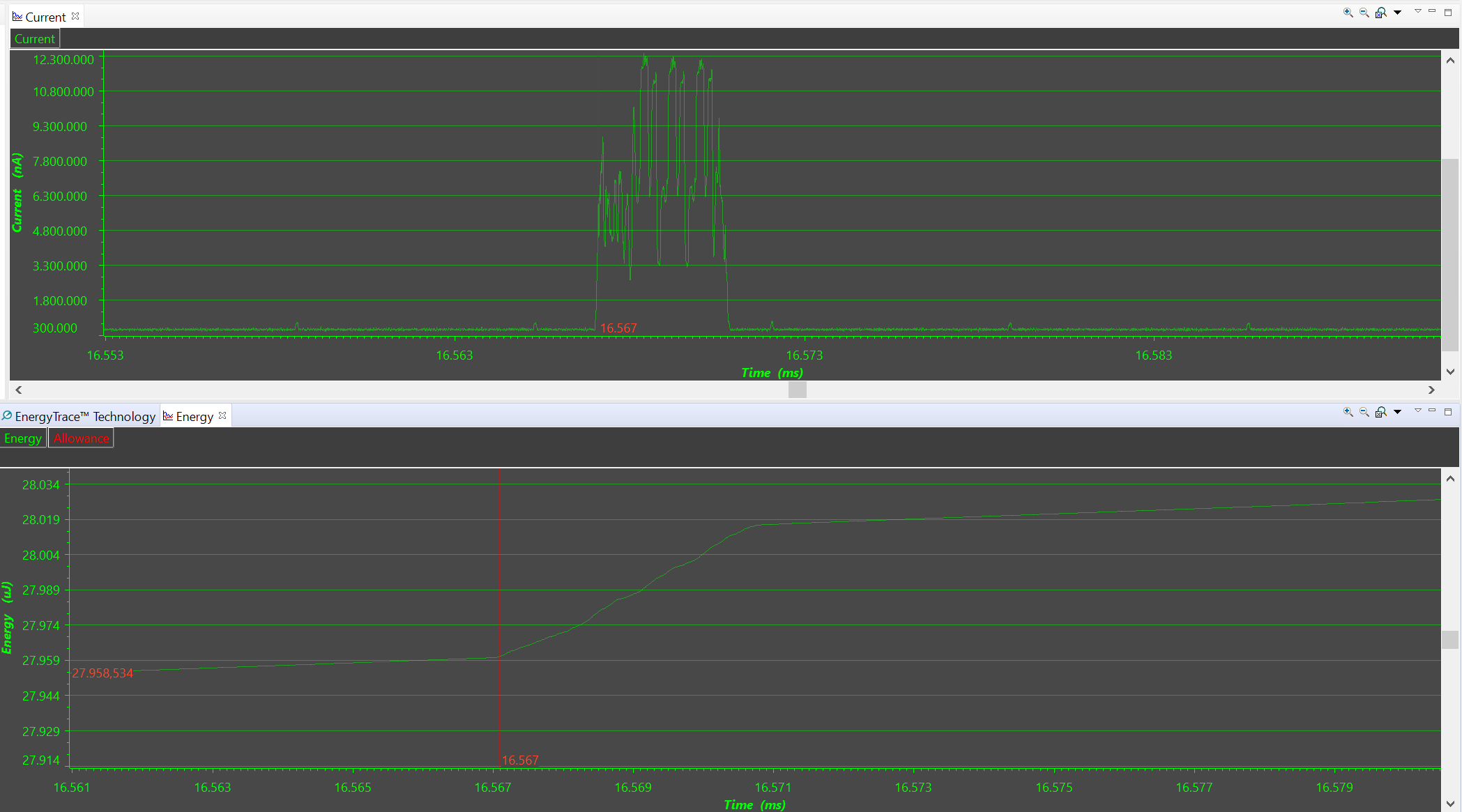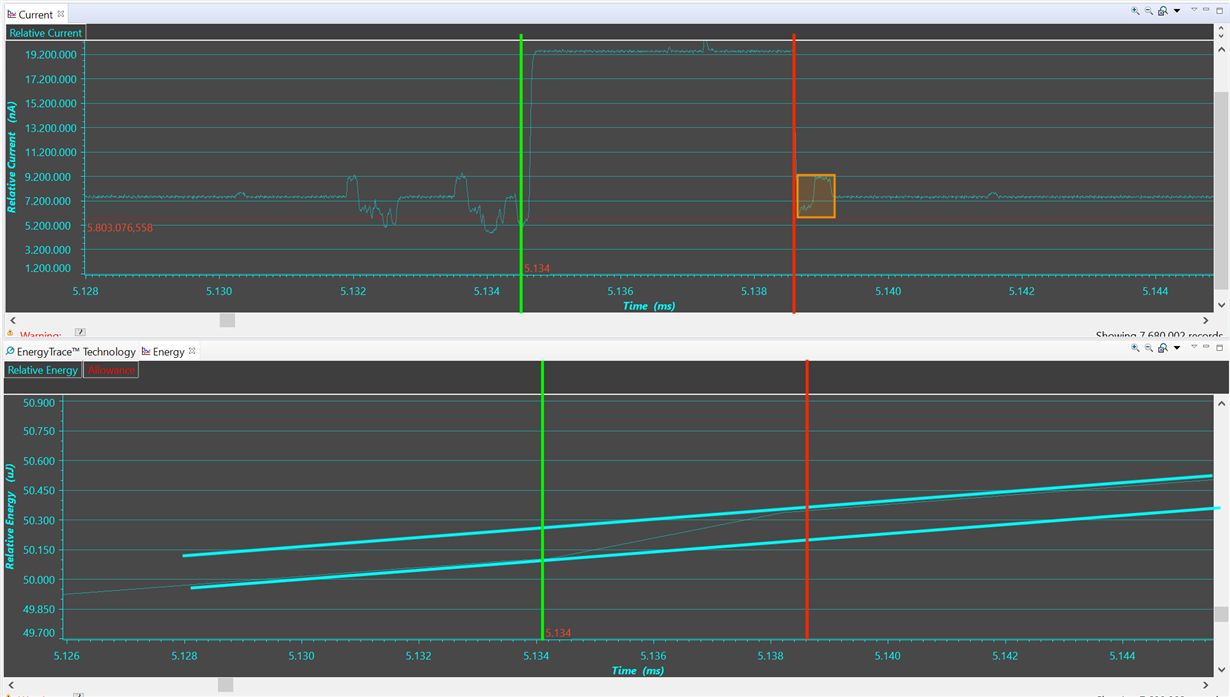Other Parts Discussed in Thread: CC1350, LAUNCHXL-CC1310, ENERGYTRACE, CC2640R2F, CC1310, MSP-EXP430G2ET, MSP430G2553, MSPDS, TMDSEMU110-U
Tool/software: Code Composer Studio
With CCS 8.1.0, I still experiencing the issue reported at CCS6.1.0: EnergyTrace Reference profiles are plotted incorrectly.
On post Thu, Sep 10 2015 8:34 PM, Bruce Lee (SDO) filed the bug for future release.
Has the bug been fixed and released with a patch, or is it inherent to the EnergyTrace technology?
Thank you!



